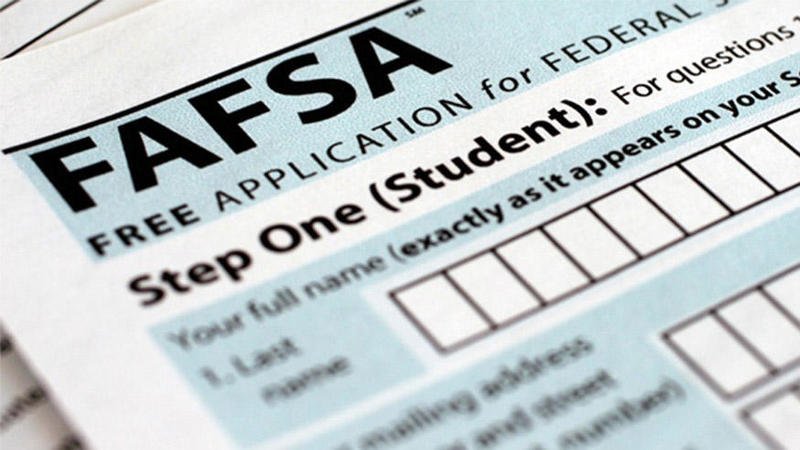
Financing College
It’s no secret that the college application process has become more complex, competitive and time consuming than ever before. Getting accepted into college, however, is only one piece of the puzzle. For many families, the daunting prospect of paying for college is just as stressful as getting admitted. The price of going to college has been rising since the 1980s. According to Forbes, the average cost for a four year college education in 2015-16 was $104,480 compared to $26,480 ($52,892 adjusted for inflation) in 1989, meaning the cost of earning a degree has doubled in that time, far exceeding the rise in average wages and income. Many students end up with not only a degree but thousands of dollars in student debt. In fact, student loans make up the largest chunk of non-housing debt in the United States — ahead of both auto and credit card debt. So what steps can you take to make sure you’re able to finance your children’s college education?

Start Early!
The sooner families start preparing for financing college the better. One way to do so is to start saving for college when your children are young so that enough money accumulates by the time they start college. Even if you aren’t able to save the total amount you’ll need to pay, you will find that any bit helps! While money can be set aside and saved in a variety of ways, many families choose to open a 529 College Savings Plan for each of their children. A 529 College Savings Plan is a tax advantaged account, based on Section 529 of the Internal Revenue Code used to benefit your child’s future. Funds can be used for tuition, fees, room and board, and other education-related expenses. Almost every state offers at least one 529 plan. While contributions to 529 plans are not tax deductible, individuals can contribute up to $15,000 per year and stay within the annual gift tax exclusion. Furthermore, earnings in a 529 plan are tax deferred and distributions are not federally taxable when used for qualified higher education expenses.The California state plan is called ScholarShare. Starting a 529 account for your child while they are young and making regular contributions is a great way to start saving for college from an early age, with appropriately managed investments that allow that money to grow.
Must-Do Forms
In order to receive any financial aid, whether in the form of grants, scholarships or loans, students need to make sure they have completed the required forms. All schools require that students submit the FAFSA and some require the CSS Profile as well. Additionally each school may have its own form that students are required to submit. (Contact Synergy Academics if you are interested in working with a financial aid counselor to be sure these forms are completed correctly and in a timely matter.)
FAFSA: The Free Application for Federal Student Aid (FAFSA) is a form that should be completed by every student applying to or currently enrolled in college. Even students who don’t think they will qualify for financial aid should fill out this form as it will be used for scholarship consideration as well as federal aid and student loan qualification. The form can be found online and will require students to provide financial and tax information for both their parents and themselves. Students and their parents should fill out the FAFSA as early as possible, as some schools will hand out scholarship and financial aid money on a first come first served basis.
CSS Profile: While all schools accept the FAFSA, some also require that students complete the College Board’s CSS Profile. This form is used by about 400 colleges and universities to award financial aid from sources other than the federal government. While FAFSA is free, the College Board charges $25 to submit the CSS Profile to one school and $16 for each additional school. The CSS Profile assesses financial need differently than the FAFSA, asking for more detailed information such as family health expenses, home ownership, and other similar details. The form can be found online and should be submitted at least two weeks prior to deadlines set by the institutions that require it.
School-Specific Forms and Documents: Many colleges and universities will have institution-required forms and documents that must be completed in addition to the FAFSA and/or CSS Profile. The school will contact students with this information so be sure that your child stays on top of any emails from the schools and submits these forms in a timely manner in order to receive financial aid as early as possible.
Types of Financial Aid

Once your student receives all of his or her college acceptances, the decision making process begins. Part of that decision for many families is comparing how much each of the schools will cost. Here are some considerations to keep in mind as well as types of financial aid available to students.
Be realistic: If you know that paying for college is going to be a critical issue, work with your student to determine the best solution. For instance, attending a two year school or an in-state four-year public university will be more affordable than out-of-state or private institutions. A two year community college is not only a very affordable option for students to complete their core college courses, it may also increase their chances of being accepted to a highly competitive school as a transfer student that they might not have been admitted to as a freshman applicant. Similarly, in-state public schools, while still quite a bit more expensive than they were a few decades ago, can cost as much as 50% less than private or out-of-state schools.
Grants: Grants provide money to students that does not have to be paid back. These are generally based on financial need and are offered to help make college affordable for low income students. One of the better known is the Pell Grant, a federal grant for low income students pursuing an undergraduate college degree. Eligibility for the Pell is determined through students’ FAFSA. Other grants may also be offered through individual schools and states.
Scholarships: Like grants, scholarships do not have to be paid back. Scholarships come in many forms. Colleges and universities offer both merit-based and need-based scholarships to highly qualified students to entice them to choose their school. These might be general financial awards offered to top student admits or awards that are specifically for students from a specific athletic or academic department. Some of these scholarships will be made based on the student’s application alone while others may require a separate application of some sort. In addition to scholarships awarded directly through the schools, there are many businesses, nonprofit/community organizations, corporations and foundations that give away thousands of dollars in scholarship money every year. Many of these scholarships require applications, but they can be very lucrative for students willing to take the time to apply, Online sources such as Fastweb, The College Board, Scholarships.com and others offer information about thousands of different scholarships.
Work Study: Work study is another form of federal financial aid. This program funds part-time campus jobs for college students with financial need. Students are offered work study as part of their financial aid package, based on information from the FAFSA and other documents. Unlike with other forms of financial aid, work study requires that the student find a job through the work study program and hold down a part time job while in school. The benefit of this type of aid is not only that it gives students work experience, which is always helpful when entering the workforce after college, but it also gives them an advantage in finding jobs since many campus employers seek students with work study since that means his or her wages will be paid through the federal aid program.
Federal Student Loans: If, after assessing college savings, grants, scholarships and work study, students still come up short in what they’ll need to pay for their education, the next step is to consider student loans. When schools send financial aid packages to students, they will include whatever loans the students are qualified for and students can choose to take those loans or decline them. Federal student loans are made from the government and heed to many laws and regulations that make them preferable to private loans. The amount students are eligible to borrow is determined by the school as well as by federal limits. Federal loans are subsidized or unsubsidized. Subsidized loans generally have better terms than unsubsidized and the U.S. Department of Education pays the interest on these loans while your student is in school and during the six month grace period after graduation. With an unsubsidized federal loan, interest accrues during all periods once the loan is issued. If students don’t pay the interest while in school or during the grace period, the interest will accrue and be capitalized (added to the balance of the loan).
Private Student Loans: Private student loans are offered by private lenders rather than by the federal government. Since the terms may not be as favorable as with federal loans, private loans should be a last resort to help make up any deficiency still left after all grants, scholarships, federal loans and family contribution have been considered. Interest rates are generally higher than with federal loans and many times the rate is not fixed. Additionally private loans do not offer benefits such as interest being paid by the government while in school or flexible repayment options. Those who have excellent credit might be able to qualify for private loans with favorable terms, but be sure to have a full understanding of the terms of the loan such as fixed vs. variable interest rate, deferment options (if any) and prepayment penalties. There is no question that a college education is a benefit to students and sets them on a path toward a successful and fulfilling career and life. By planning ahead and staying on top of all of the requirements, many families are able to relieve some of the financial stress of college by qualifying for financial aid to help make the investment less stressful.



